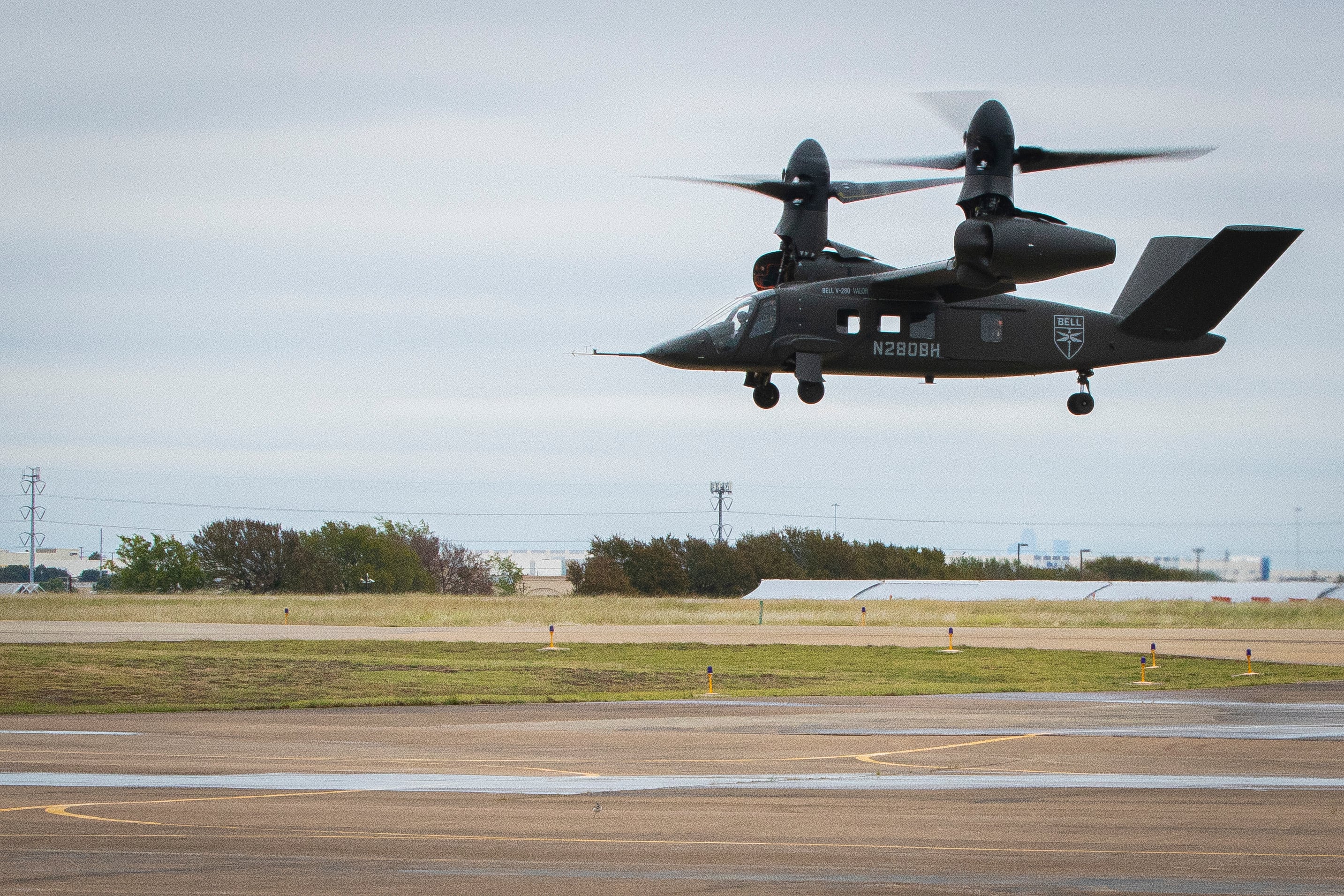The U.S. Army is working toward finalizing its design by the end of the year for the Future Long-Range Assault Aircraft that will ultimately replace the UH-60 Black Hawk utility helicopter, as the service hopes to speed up its fielding to earlier than 2030, according to the project manager in charge of the effort.
The service has had “unprecedented access to the design [in] real time” of FLRAA through Bell’s rigorous digital engineering, Col. Jeffrey Poquette, the service’s project manager for the program, said in a recent interview. The Army chose the Textron subsidiary at the end of 2022 to build a tiltrotor aircraft that is expected to fly twice as fast and twice as far as a Black Hawk.
Bell beat out a Lockheed Martin’s Sikorsky and Boeing team following a competitive technology demonstration phase where each built a flying demonstrator. Sikorsky and Boeing’s Defiant X featured coaxial rotor blades.
The design process for FLRAA, which will culminate in a critical design review either sometime toward the end of this fiscal year or in the beginning of the next, has allowed the Army to move much faster than in previous aircraft development programs, Poquette said.
“When we had our ... preliminary design review we got to see and have access to that design on a level we’ve never had, which is going to make for a much better CDR,” he said, and “we have a compressed test schedule. That’s really where the benefits of digital engineering are going to pay off.”
Essentially, the process allows the Army and Bell to build prototypes in the engineering manufacturing and development phase that “are as close to what we want as possible,” Poquette said.
The Army is planning to compress a test schedule that historically has taken anywhere from four to even 10 years in other vertical lift aviation programs to just a two-year period, according to Poquette.
“We’re not going to find big, expensive things. We’re not going to find safety things. We’re going to find small things that we have to tweak,” he said. “We found things in PDR, and they fixed it, and now we know that we’re going to have the architecture right to meet [the modular open system architecture] and that kind of thing.”
Bell has established a special systems integration lab, or SIL, for FLRAA in Arlington, Texas, to continue to develop and check out aircraft design and behaviors.
“Every mission that the test aircraft will fly will be first flown in the SIL,” Ryan Ehringer, Bell’s FLRAA program manager, said in the same interview.
The SIL will be coupled with 200-plus flight hours in Bell’s V-280 Valor tiltrotor demonstrator through a competitive Joint Multi-Role Technology Demonstrator (JMR-TD) program built to drive down risk for the future aircraft.
This approach, when joined by a variety of other subsystem testing efforts, “reduces risk tremendously,” Ehringer said.
The Army also believes it has the buy-in necessary from the current presidential administration to continue to progress with the program, even demonstrating capability for new Army Secretary Daniel Driscoll at a joint capstone experimentation event in California called Project Convergence earlier this year.
“We expect to field the first aircraft in 2030 and that’s according to the plan as it stands today,” Poquette said, adding that there “are opportunities ... the Army is looking at to potentially see if we can go do something different and there’s different risks for going faster.”
Jen Judson is an award-winning journalist covering land warfare for Defense News. She has also worked for Politico and Inside Defense. She holds a Master of Science degree in journalism from Boston University and a Bachelor of Arts degree from Kenyon College.





